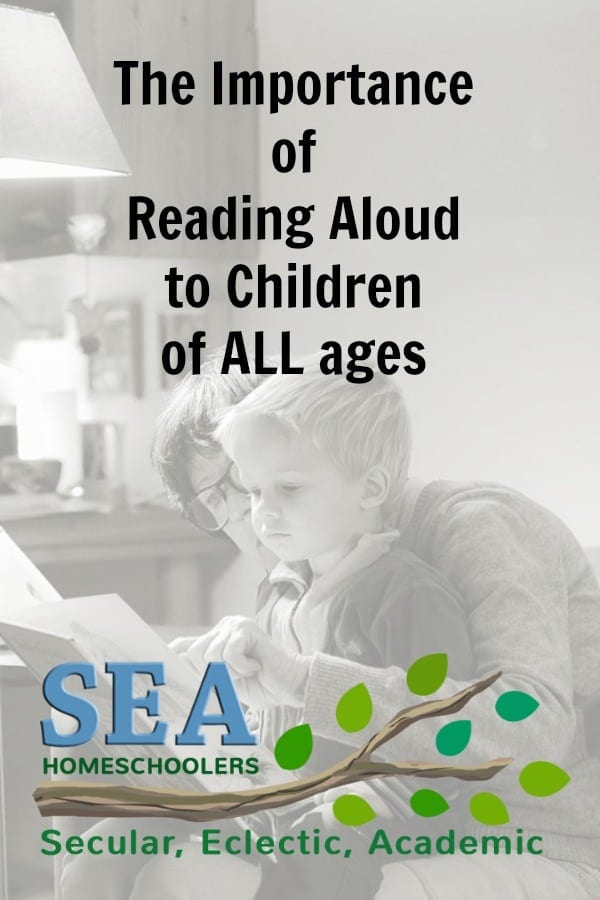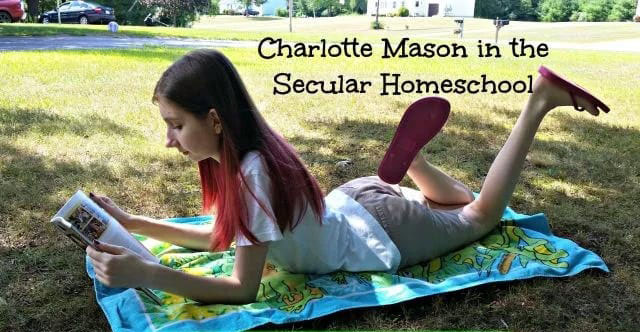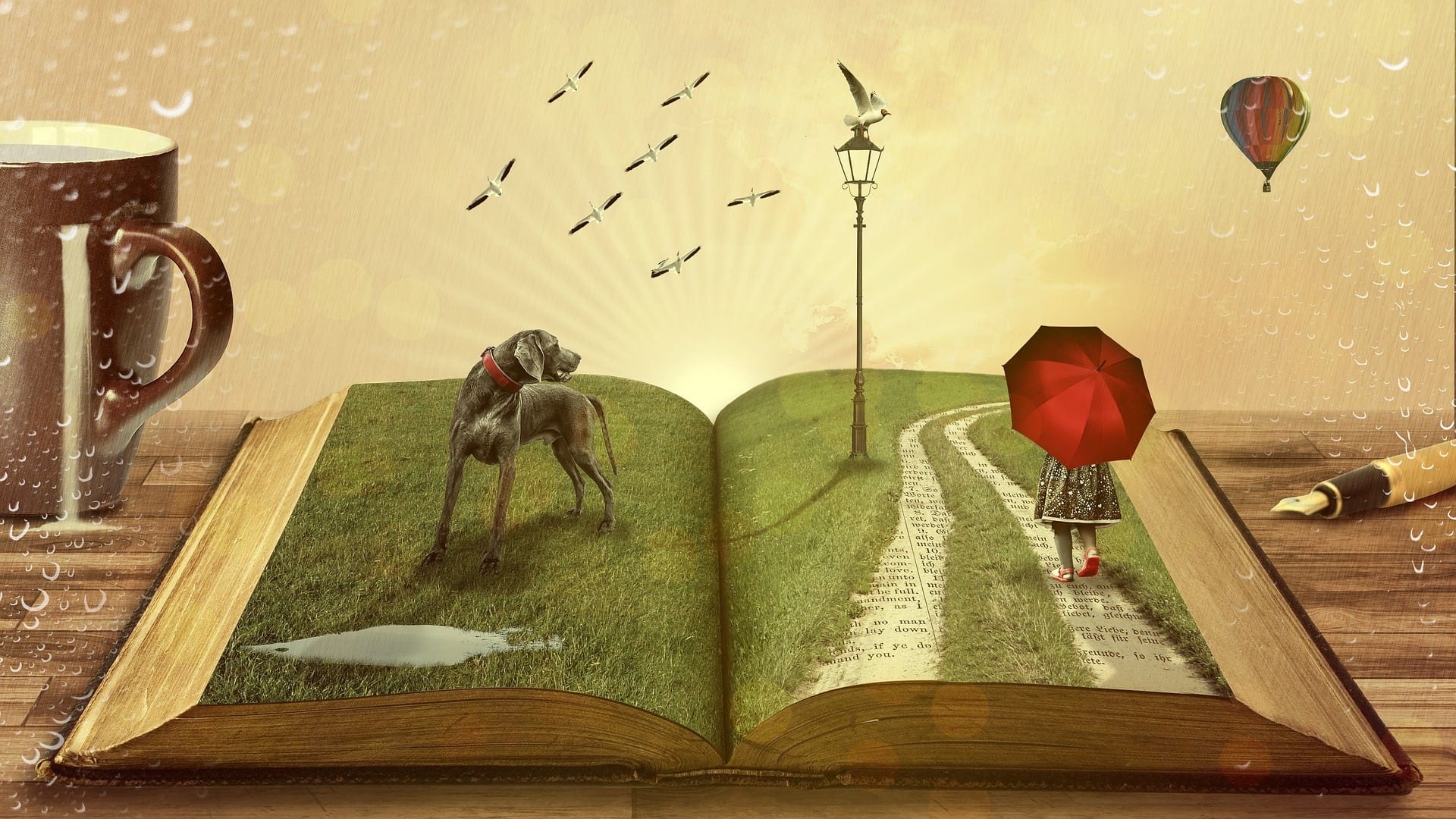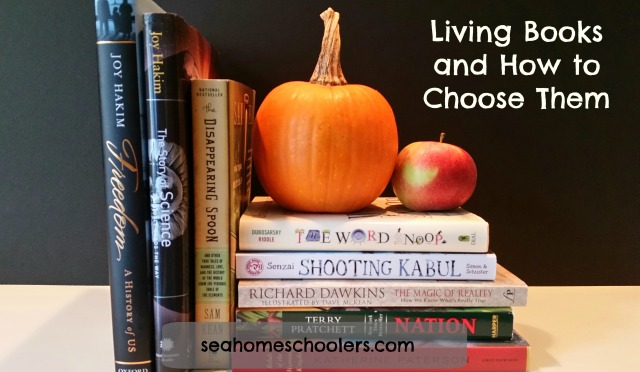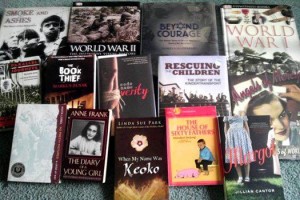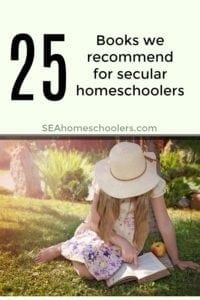 On any given day you will find multiple conversations focused on books in our online community. Rich discussions of authors and subject matter, innovative ideas for related lessons, and always a plethora of recommendations for more books. Reading back through hundreds of threads in various SEA Homeschoolers Facebook groups these 25 books have been recommended time and time again. Having read nearly every book on this list I can certainly understand why. This book list is secular homeschool approved.
On any given day you will find multiple conversations focused on books in our online community. Rich discussions of authors and subject matter, innovative ideas for related lessons, and always a plethora of recommendations for more books. Reading back through hundreds of threads in various SEA Homeschoolers Facebook groups these 25 books have been recommended time and time again. Having read nearly every book on this list I can certainly understand why. This book list is secular homeschool approved.
Secular Homeschool Reading & Book List
Red: A Crayon’s Story by Michael Hall – A funny, insightful, and colorful story about being true to your inner self and following your own path despite obstacles that may come your way.
Rosie Revere, Engineer by Andrea Beaty – Rosie may seem quiet during the day, but at night she’s a brilliant inventor of gizmos and gadgets who dreams of becoming a great engineer in this book that celebrates creativity and perseverance.
Grandmother Fish: A Child’s First Book of Evolution by Johnathan Tweet – Told in an engaging call and response text this book takes children and adults through the history of life on our planet and explains how we are all connected.
The Miraculous Journey of Edward Tulane by Kate DiCamillo – Somewhere between fairy tale and fable is the tale of a China rabbit named Edward, transformed by the lives he touches as he learns about love, loss and consequences.
Matilda by Roald Dahl – A brilliant, but lonely girl with special powers and neglectful parents finds courage and friendship while facing off against surprising characters from her daily life.
Our Family Tree: An Evolution Story by Lisa Westberg Peters – The roots of our family tree reach back millions of years to the beginning of life on earth. In this family album you’ll meet some of our oldest relatives–from both the land and the sea–and discover what we inherited from each of them along the many steps of our wondrous past.
The One and Only Ivan by Katherine Applegate – Inspired by the true story of a captive gorilla known as Ivan, this unforgettable illustrated novel told from the point-of-view of Ivan himself is a story of friendship, art, and hope.
Hoot by Carl Hiaasen – An ecological mystery made up of endangered miniature owls, Mother Paula’s All-American Pancake House scheduled to be built over their burrows, and the owls’ unlikely allies–three middle school kids determined to beat the system.
Holes by Louis Sachar – Stanley Yelnats, a kid who is under a curse. Now he has been unjustly sent to a boys’ detention center. It doesn’t take long for Stanley to realize there’s more than character improvement going on at Camp Green Lake: the warden is looking for something. Stanley tries to dig up the truth in this inventive and humorous tale of crime, punishment, and redemption.
His Dark Materials by Philip Pullman – This epic trilogy tells the story of Lyra and Will, two ordinary children on a perilous journey through shimmering haunted otherworlds. They will meet witches and armored bears, fallen angels and soul-eating specters. And in the end, the fate of both the living and the dead will rely on them. Philip Pullman unlocks the door to a world parallel to our own, but with a mysterious slant all its own. Dæmons and winged creatures live side by side with humans, and a mysterious entity called Dust just might have the power to unite the universes–if it isn’t destroyed first.
Wonder by R.J. Palacio – August was born with a facial difference that had prevented him from going to school. Starting 5th grade he wants nothing more than to be treated as an ordinary kid, but his new classmates can’t get past Auggie’s extraordinary face. What follows is a powerful story of a community’s struggle with empathy, compassion, and acceptance.
Percy Jackson and the Olympians by Rick Riordan – This exciting series follows the demigod son of Poseidon and his friends on a quest that will have them meeting gods, battling monsters, and taking on the Titans from Greek mythology.
Brown Girl Dreaming by Jacqueline Woodson – Jacqueline Woodson, the acclaimed author of Another Brooklyn, tells the moving story of her childhood in mesmerizing verse. In vivid poems she shares what it was like to grow up as an African American in the 1960s and 1970s, living with the remnants of Jim Crow and her growing awareness of the Civil Rights movement. Touching and powerful, each poem is both accessible and emotionally charged, each line a glimpse into a child’s soul as she searches for her place in the world.
The Giver by Lois Lowry – This story centers on twelve-year-old Jonas, who lives in a seemingly ideal, if colorless, world of conformity and contentment. Not until he is given his life assignment as the Receiver of Memory does he begin to understand the dark, complex secrets behind his fragile community.
The Inheritance Cycle by Christopher Paolini – This 4 book series follows 15 year old Eragon who believes that he is merely a poor farm boy, until his destiny as a Dragon Rider is revealed. Gifted with only an ancient sword, a loyal dragon, and sage advice from an old storyteller, Eragon is soon swept into a dangerous tapestry of magic, glory, and power. Now his choices could save or destroy the Empire.
Lord of the Flies by William Golding – At the dawn of the next world war, a plane crashes on an uncharted island, stranding a group of schoolboys. At first, with no adult supervision, their freedom is something to celebrate. This far from civilization they can do anything they want. Anything. But as order collapses, as strange howls echo in the night, as terror begins its reign, the hope of adventure seems as far removed from reality as the hope of being rescued.
To Kill a Mockingbird by Harper Lee – The unforgettable novel of a childhood in a sleepy Southern town and the crisis of conscience that rocked it takes readers to the roots of human behavior, to innocence and experience, kindness and cruelty, love and hatred, humor and pathos.
Harry Potter by J.K. Rowling – Imagine a school in a castle filled with moving staircases, a sport played on flying broomsticks, an evil wizard intent on domination, remarkable friends, limitless secrets and surprises, and an ordinary boy who’s the hero of a whole world he doesn’t even yet know. This is the story that comes to life in this marvelous series as each of the seven books chronicles one year in Harry’s adventures at Hogwarts.
The Book Thief by Markus Zusak – In Nazi Germany, 1939, the country is holding its breath. Liesel Meminger is a foster girl living outside of Munich, who scratches out a meager existence for herself by stealing when she encounters something she can’t resist–books. With the help of her accordion-playing foster father, she learns to read and shares her stolen books with her neighbors during bombing raids as well as with the Jewish man hidden in her basement.
The Wee Free Men by Terry Pratchett – Armed with only a frying pan and her common sense, young witch-to-be Tiffany Aching must defend her home against the monsters of Fairyland. Luckily she has some very unusual help: the local Nac Mac Feegle–aka the Wee Free Men–a clan of fierce, sheep-stealing, sword-wielding, six-inch-high blue men.
Inside Out and Back Again by Thanhha Lai – Inspired by the author’s childhood experience as a refugee, fleeing Vietnam after the Fall of Saigon and immigrating to Alabama. This coming-of-age novel told in verse has been celebrated for its touching child’s-eye view of family and immigration.
1984 by George Orwell – The year 1984 has come and gone, but Orwell’s prophetic, nightmarish vision in 1949 of the world we were becoming is timelier than ever. A startlingly original and haunting modern classic of “negative utopia” that creates an imaginary world that is completely convincing, from the first sentence to the last four words. No one can deny the novel’s hold on the imaginations of whole generations, or the power of its admonitions -a power that seems to grow, not lessen, with the passage of time.
The Absolutely True Diary of a Part-Time Indian by Sherman Alexie – The story of Junior, a budding cartoonist growing up on the Spokane Indian Reservation. Determined to take his future into his own hands, he leaves his troubled school on the rez to attend an all-white farm town high school where the only other Indian is the school mascot. Heartbreaking, funny, and beautifully written, coupled with poignant drawings that reflect the character’s art. This powerful tale based on the author’s own experiences chronicles the contemporary adolescence of one Native American boy as he attempts to break away from the life he was destined to live.
Fahrenheit 451 by Ray Bradbury – A masterwork of twentieth century literature set in a bleak, dystopian future. In a world where television rules and literature is on the brink of extinction, firemen start fires rather than put them out. Their job is to destroy the most illegal of commodities, the printed book, along with the houses in which they are hidden. When a fireman meets an eccentric young neighbor who introduces him to a past where people didn’t live in fear and to a present where one sees the world through the ideas in books instead of the mindless chatter of television, then she suddenly disappears…he begins to question everything he has ever known.
Animal Farm by George Orwell – As ferociously fresh as it was more than a half century ago, this remarkable allegory of a downtrodden society of overworked, mistreated animals, and their quest to create a paradise of progress, justice, and equality is one of the most scathing satires ever published. As we witness the rise and bloody fall of the revolutionary animals, a razor-edged fairy tale that records the evolution from revolution against tyranny to a totalitarianism just as terrible.
More articles about secular homeschool & reading
Reading Comprehension Activities
The Importance of Reading Aloud
Building the Habit of Reading Aloud

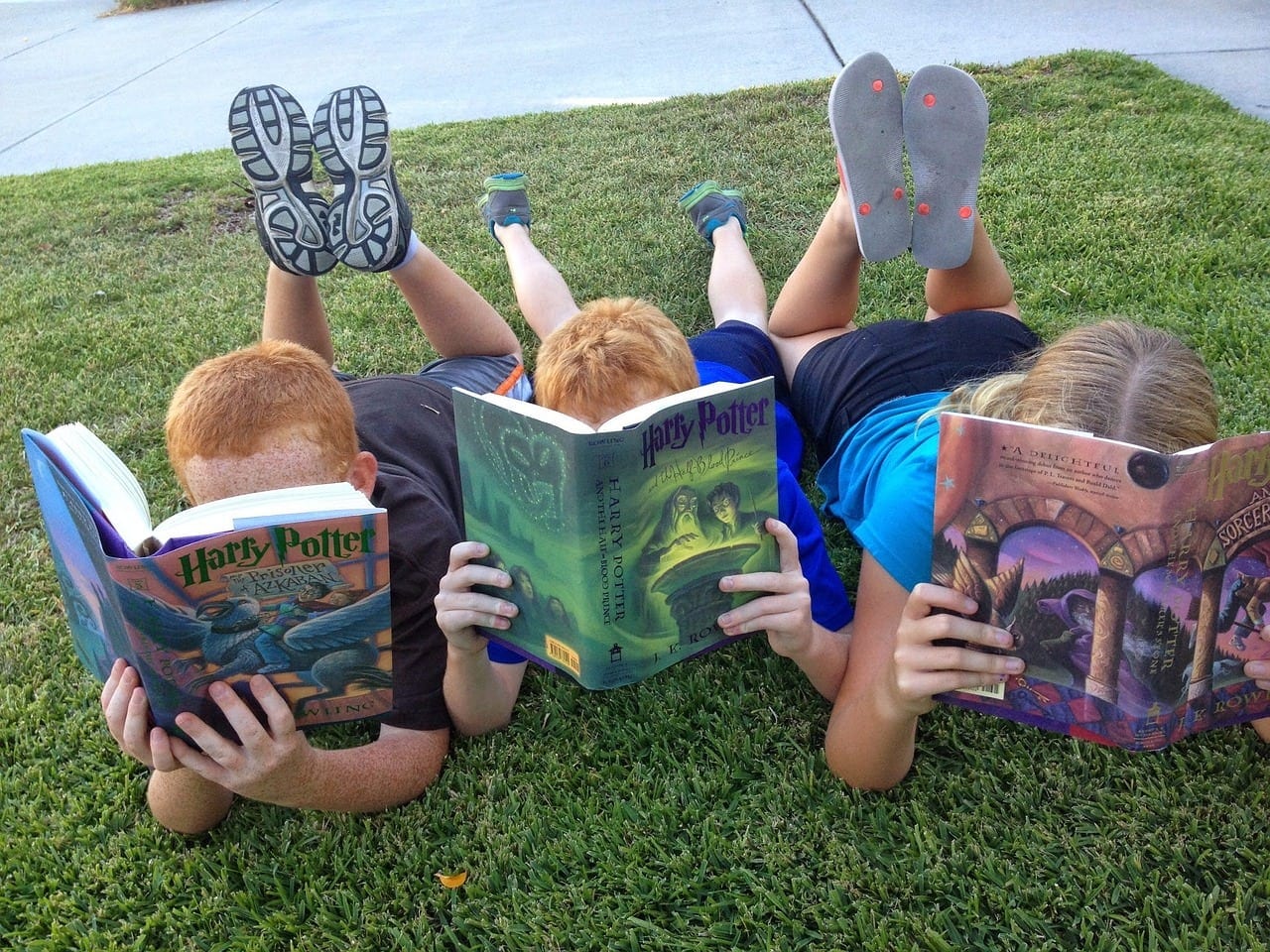
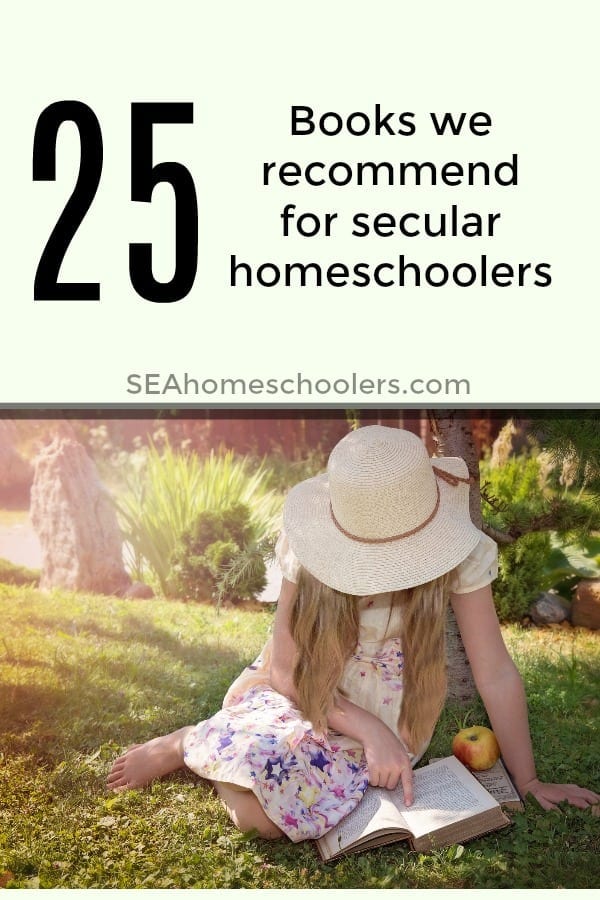
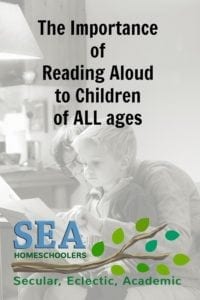 Where the Wild Things Are
Where the Wild Things Are